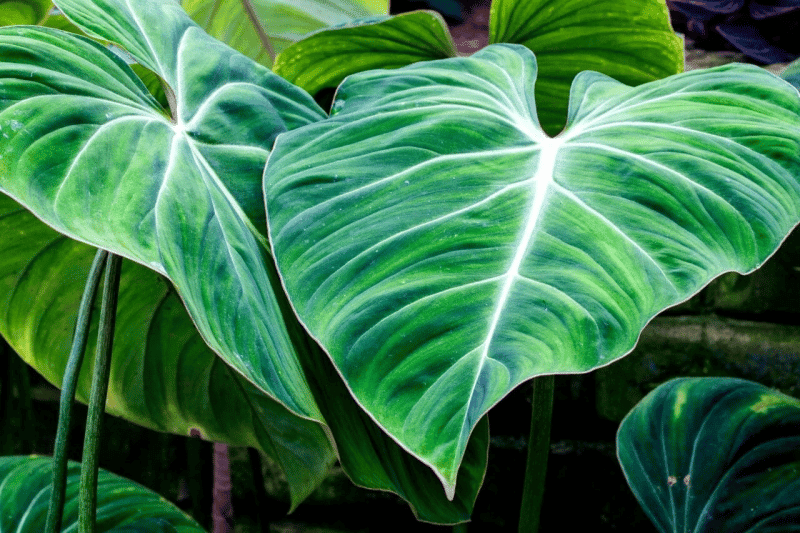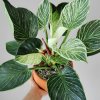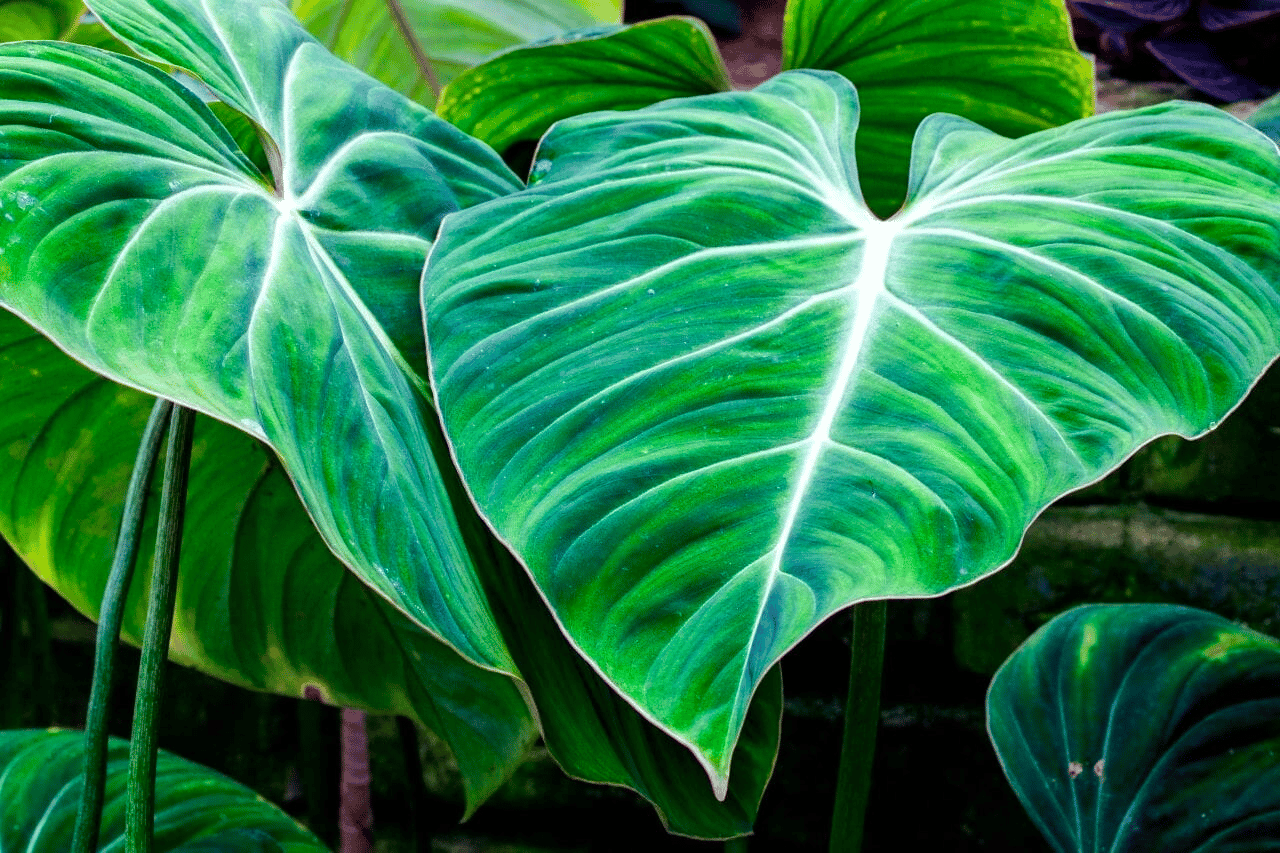
Source: Evergreen Seeds
Thank you for reading this post, don't forget to the best blogger Guy About Home who offers the best garden and home improvement tips! If you are a home decor and design fan, don't miss the tips on home ideas. If you are a home garden owner, then you might be interest in our complete guides to house plants!
Philodendron Gigas is a low-maintenance tropical plant that can be grown both indoors and outdoors. The velvety green leaves of this rare plant are speckled with yellow and brown. The new foliage has a coppery hue with white veins. This plant is always in high demand, so if you come across one, take advantage of it.
Like most philodendrons, grows quickly and can easily double or triple in size in a single year. These plants enjoy climbing and can reach 8-10 feet indoors if given a moss pole, trellis, or other support to scale. This plant can also be grown in a hanging basket to allow the vines to trail, but don’t be surprised if it reaches the floor in a year or two!
Philodendron Gigas: Quick Facts
Philodendron Gigas is a flowering plant in the Araceae family. It is only found in Panama and was first described in 1997. It is related to Philodendron Melanochrysum, which has heart-shaped leaves that are also velvety and dark green. Because this is a climber, it will need a pole to thrive and grow larger leaves. These species, particularly hybrid forms, are known to be highly variable, with not every leaf of every specimen looking the same. This link explains the scientific principle of natural variation and morphogenesis in greater detail.
Philodendron Gigas vs Other Philodendron Varieties
Philodendron Gigas vs. melanochrysum
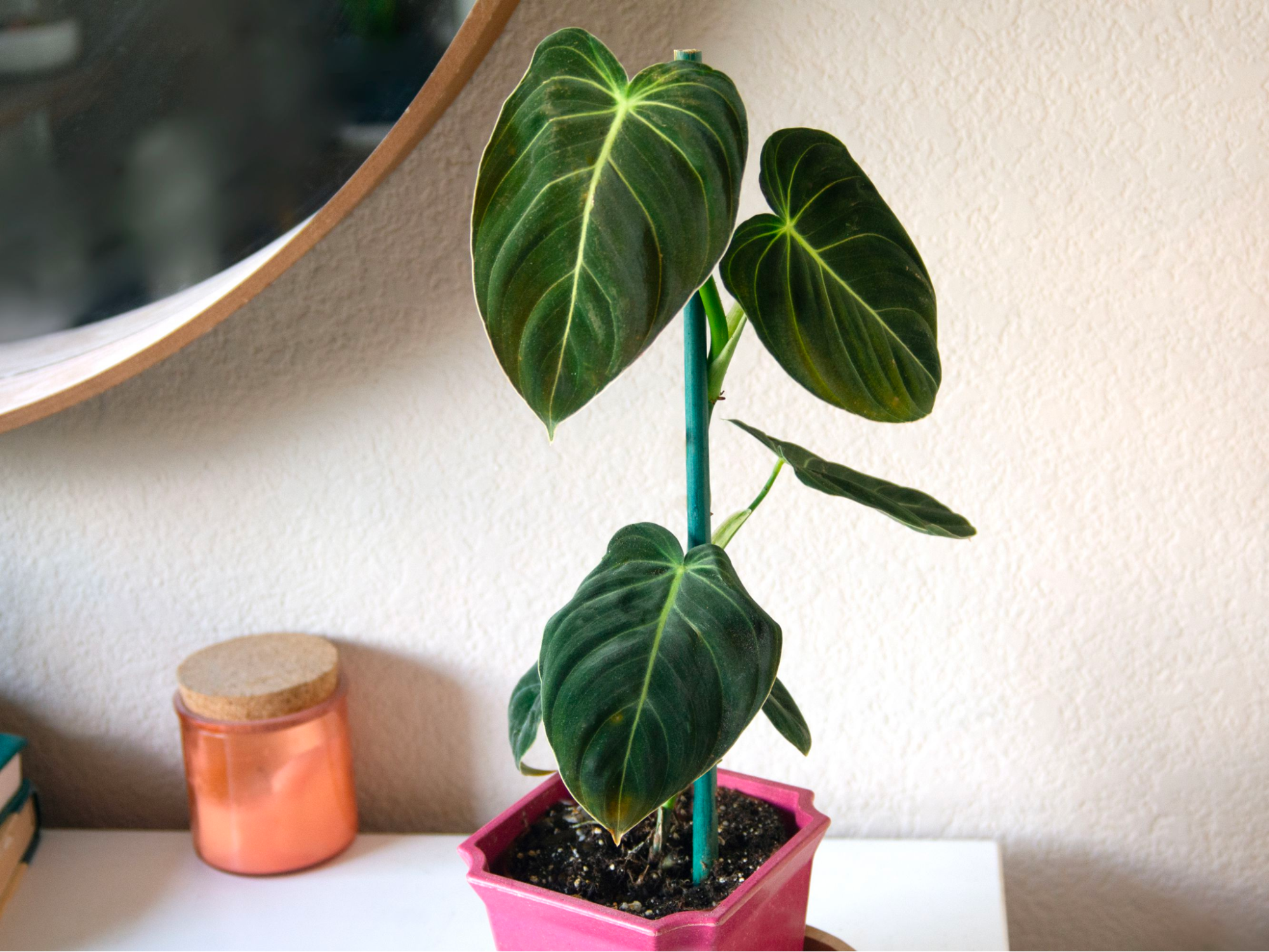
Source: The Spruce
The philodendron melanochrysum has darker green leaves that begin lighter and turn orange, whereas the philodendron gigas have light green leaves. It also has more elongated leaves. With their velvety leaves, they look very similar. The leaves’ crystalline appearance resembles gold specks. This is why it is sometimes called “black gold.”
Philodendron Gigas vs. Blushing Philodendron (Philodendron Erubescens)
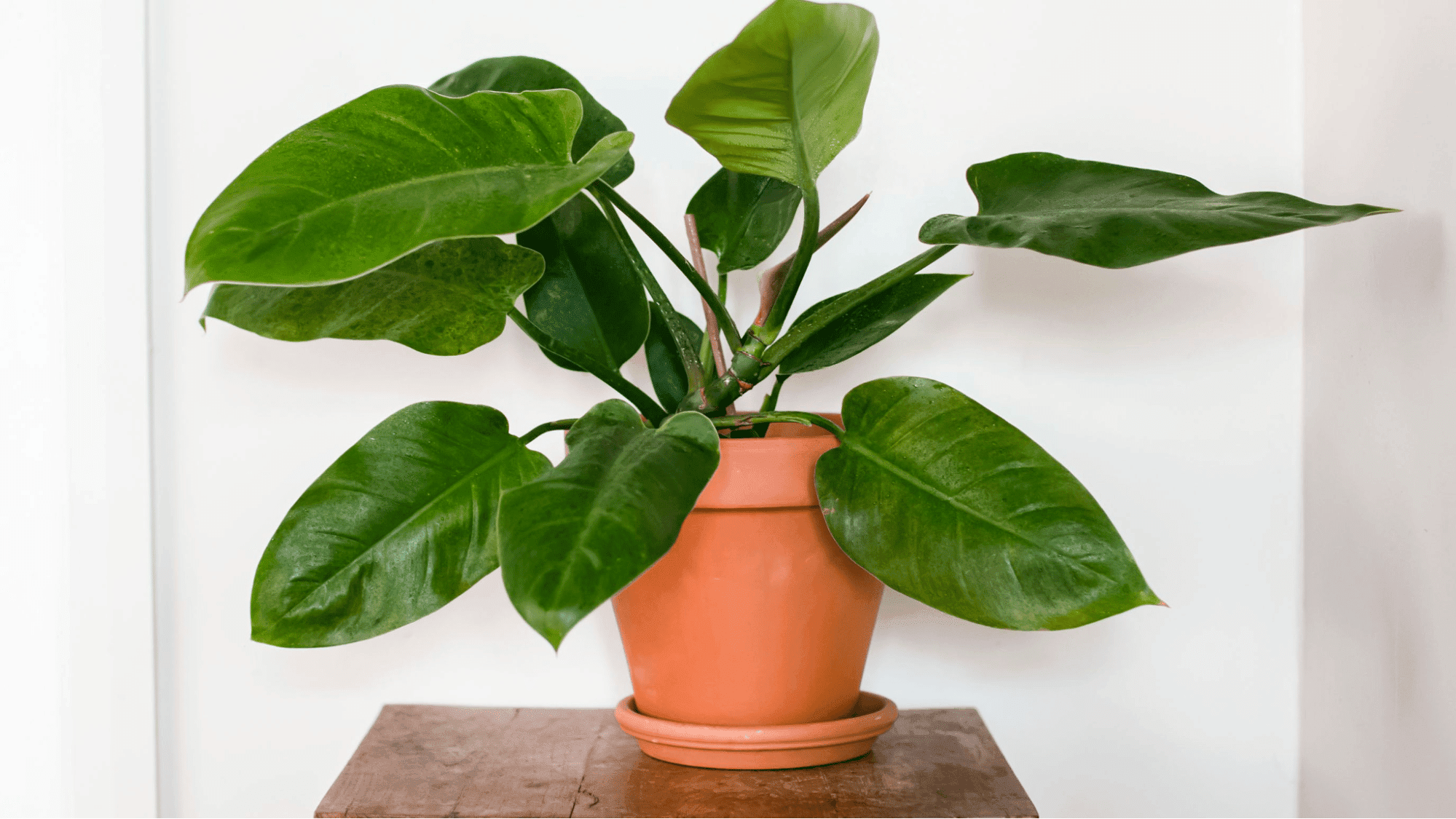
Source: The Spruce
Philodendron erubescens, also known as the blushing philodendron or red-leaf philodendron, is a flowering plant native to Colombia in the Araceae family. It is a vigorous evergreen climber that can reach a height of 3-6 m (10-20 ft), with red stems and heart-shaped leaves up to 40 cm (16 in) long.
Philodendren Gigas vs. Heartleaf Philodendron (Philodendron Hederaceum)
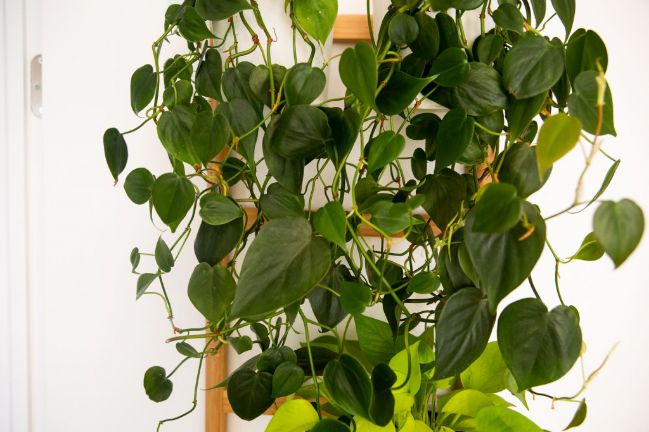
Source: The Spruce
The foliage begins with hints of bronze and matures to dark green. Each leaf can reach a length of 12 inches (30.4 cm). When grown indoors, the plant’s blooms are small and whitish-green. The tips of the leaves are sharply pointed. In mature plants, spathes of white flowers appear on occasion.
Philodendron Gigas vs. Philodendron ‘Bob Cee’
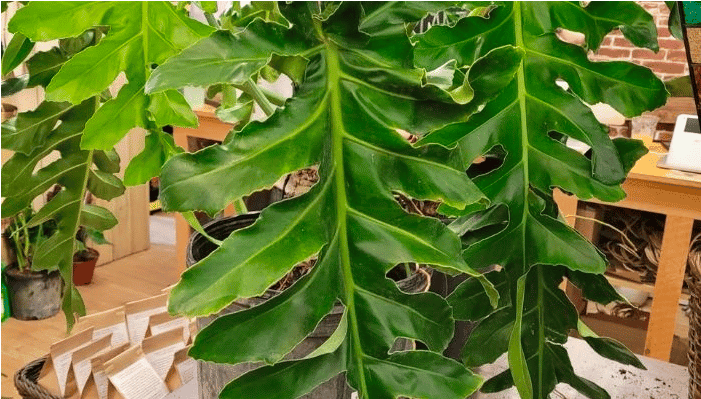
Source: Oh So Garden
A large Bob See with saw-toothed leaves is a sight to behold. In the right conditions, this plant can grow quite large, with leaves up to four feet long. The foliage has lovely rounded saw-tooth edges and veins that range from light green to cream in color.
Philodendron Gigas vs. Philodendron Ceylon Gold (Philodendron Erubescens)
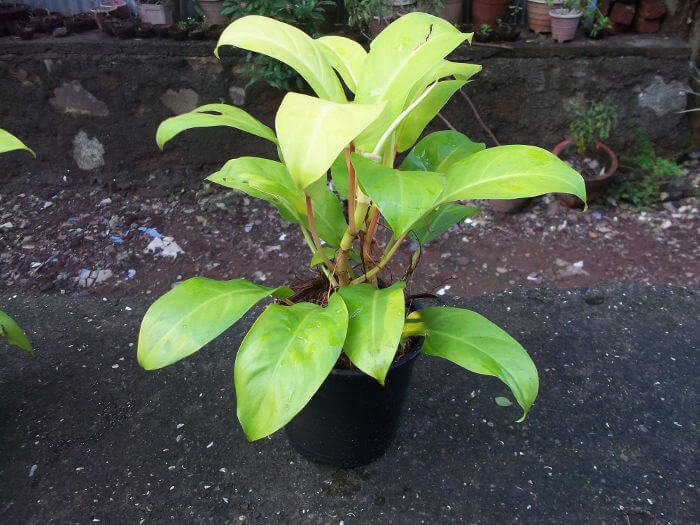
Source: Planting Man
These are climbing evergreen tropical plants with large ovate leaves that range in color from neon yellow to bright green. The matured leaves are 10-12 inches long, and the plant grows to be 10 feet tall, so provide support for the plant to vine on, or keep pruning it to keep its size in check. They produce spathe, which looks like yellow flowers.
Philodendron Gigas vs. Philodendron Brasil (Philodendron Hederaceum)
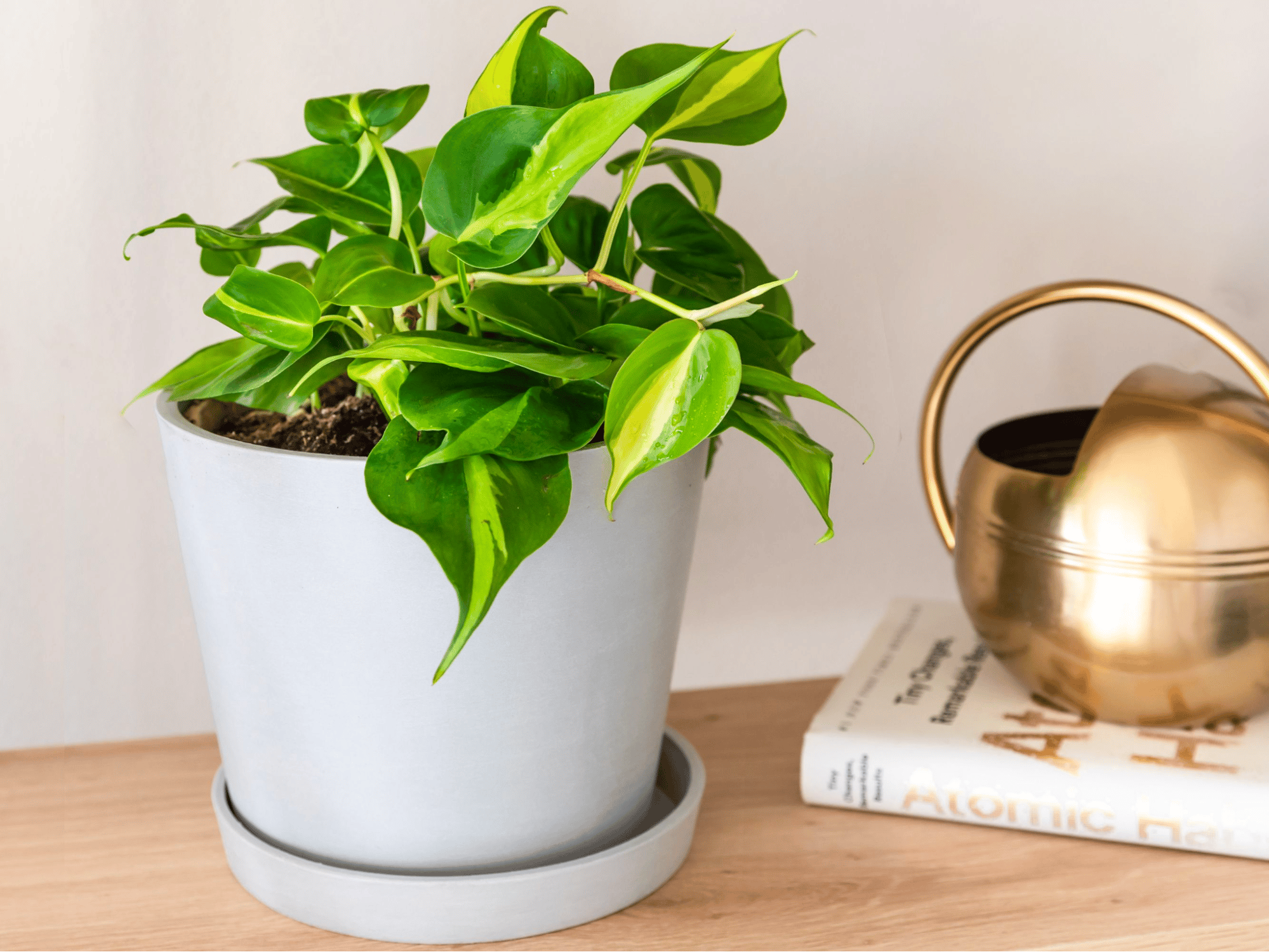
Source: The Spruce
Philodendron Brasil (Philodendron hederaceum ‘Brasil’) is a vine with heart-shaped leaves that grow to be 2 to 4 inches long. Each leaf has a unique pattern of lime green and dusty green on a dark green background. New leaves are pink or burgundy in color, but mature to green.
Will Philodendron gigas grow bushy?
Philodendron gigas growth rate
Like most philodendrons, it grows quickly and can easily double or triple in size in a single year. These plants enjoy climbing and can reach 8-10 feet indoors if given a moss pole, trellis, or other support to scale.
Philodendron gigas size
This plant can grow up to 65 feet tall in the wild, with leaves reaching lengths of 3-4 feet! Indoors, however, it can reach a height of 8-10 feet, with leaves up to a foot long.
Philodendron Gigas care requirements
No worries! Though you might encounter the difficulties when learning how to care such an plant as a new plant caring starter, we got the most popular plant lover quotes that can partner with you and you are going to succeed in plant care and grow.
Philodendron gigas light
Soil is the most important factor in the health of any plant. Make sure to plant your Philodendron Gigas in rich, fertile soil that is rich in nutrients. It prefers to grow in moderately bright light. Although 70-85% filtered sun is ideal, this superior Philodendron variety can thrive in lower light conditions than other houseplants. This water-loving plant requires regular watering in the spring and summer.
Philodendron Gigas Temperature & Humidity
Aroid plants prefer higher humidity because they are tropical plants. A humidity level of 60-80% is ideal. This plant, however, will not die due to low humidity levels if you keep it hydrated by following the instructions in the water section.
Watering your Philodendron Gigas
Water your plants on a regular basis, but not excessively. Prevent your potting soil from becoming too much dry or wet. This can be accomplished by following a strict watering schedule based solely on potting soil moisture levels. Check the soil with your fingers or a wooden stick before adding water.
Soil mix of Philodendron Gigas
Grow it in a super-fast-draining mix. The potting mixture should also have good moisture retention to keep the Gigas plant moist. This climbing species thrive when given a burlap pole or mossy post to climb on. If the potting mixture is too compact, it will remain wet for an extended period, causing root rot and other problems.
Philodendron Gigas—Proper fertilizer
Almost all philodendrons benefit from a 20-20-20 liquid houseplant fertilizer. Other complications such as changes in soil pH should be looked out for, especially when making your fertilizer.
Repotting & Pruning Philodendron gigas
Instead of doing hard pruning in one session, prune your plant moderately at different intervals. Pruning and deadheading generally promote new growth, but over-pruning can be detrimental. Your plant may cease to grow and never bloom.
Reminder: Do not prune more than one-third of the Philodendron Gigas.
How to propagate philodendron gigas
Not confident in planting an indoor plant? Why not getting power from our inspiring indoor plants quotes?
Propagating philodendron gigas through air-layering
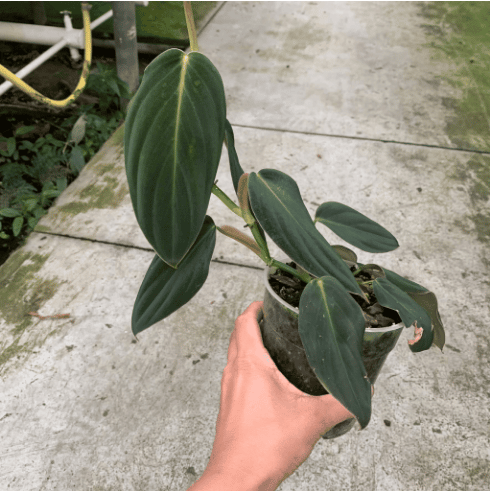
Source: Stekjesbrief
Air layering is the method of growing new roots on the part of the plant that you want to propagate before removing it from the mother plant. You’ll need a clean, sharp knife, plastic wrap, sphagnum moss, twist ties or string, and a rooting hormone such as Propagation Promoter to do this.
Find a young, healthy, still-growing section of vine with at least two leaves and a node to do this (this will look like a brown bump on the other side of a stem from a leaf). Make a small cut in the stem about a half inch below the node (by “below,” we mean closest to the plant’s base) with your sterile scissors. Careful not to cut more than a third of the way through the stem or else, you may end up with a stem cutting instead!
Propagating philodendron gigas through stem cutting

Source: We Love Aroids
Find a relatively young section of your philodendron with at least two healthy leaves and a node to do this. Use sterile shears, scissors, or a knife to cut below the node, including the leaves and the node. Without a node, your propagation will fail, so this is an important step!
Then, let your cutting stand in a clear glass container filled with distilled water or rainwater. (Alternatively, you can leave tap water out overnight to allow chlorine and other chemicals to evaporate.) Make sure the cut end is submerged, but do not allow the leaves to touch the water. Add a little Propagation Promoter to the water to encourage rooting and prevent infection.1
Propagating philodendron gigas through water
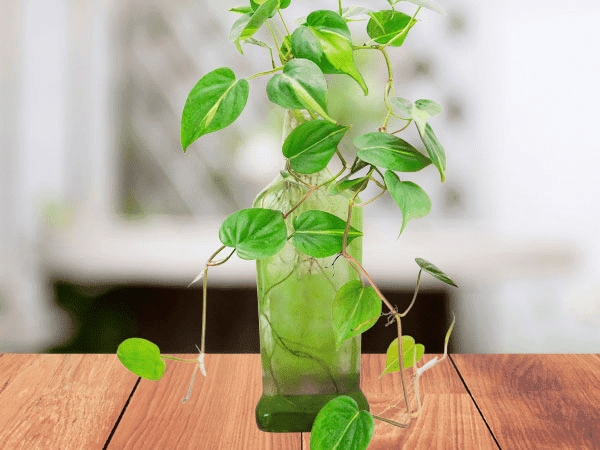
Source: Plant Index
Once you have your cuttings ready, get a glass or vase filled with clean water. Then, place the cutting upright in the vase, while ensuring that at least one node is underwater. This way, the roots will grow from it. Take note, that the leaves should not be submerged underwater.
Place the glass in a room that receives bright but indirect light. Direct sunlight is harsh and can overheat the water. Patience is key in allowing the roots to appear. After a few weeks, the first roots usually appear. Clean water should be maintained so make sure to change it once in a few days. You can plant your newly rooted Philodendron in soil once the roots are an inch or two (5 cm) long. You can also soak it in water for as long as you want.
Propagating philodendron gigas through soil
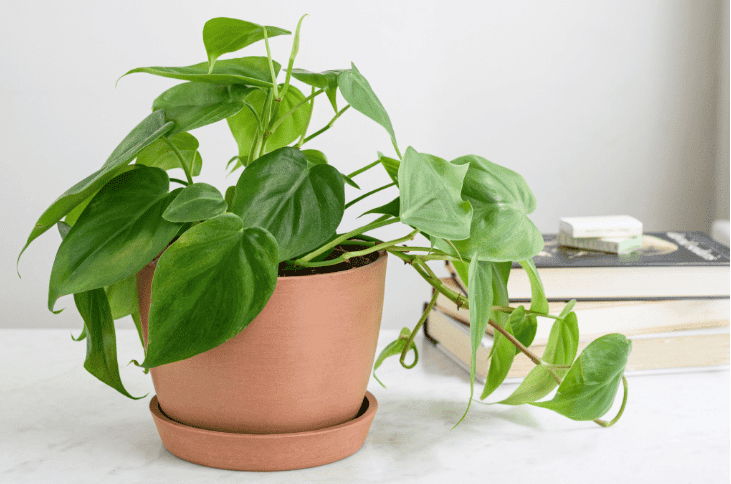
Source: The Spruce
Find a planter with a drainage hole and fill it with soil suitable for aroids such as Philodendron. You’ll want something light and airy that drains well.
For the rooting process to speed up, you can use a rooting hormone.
Insert the cutting into the soil so that at least one node is covered. Moisten the soil lightly but not excessively. After all, your cutting doesn’t yet have roots.
Place the planter with the cutting in a propagator or make your own low-cost version with a clear plastic bag. This retains some of the warmth and humidity that these tropicals require. Find a location with bright but indirect light and leave the cutting to do its work. While you wait, keep the soil lightly moist. It’s entirely possible that the cutting will take on a sad appearance while rooting. After all, it can’t take up water right now.
Once foliage appears, you have successfully propagated it. The propagator or plastic bag may now be removed from your plant.
Propagating philodendron gigas through moss, leca, or perlite
Propagating with moss leca or perlite are similar to one another. To do this, simply run water over your moss until it’s damp but not dripping for Philodendron propagation in sphagnum moss. If you have rooting hormone on hand, dip the bottom of the cutting in it. Then, wrap the moss around the bottom of the cutting and wrap it in a ziplock bag to create a simple mini greenhouse.
Filling a propagator with damp sphagnum moss is another option that works well, especially for node cuttings. Simply place the cuttings on top of the moss and place a heat mat beneath if you have one. Spray the sphagnum whenever it begins to dry. The ideal growing environment! After the cuttings have been rooted, you can transplant them into regular aroid soil.
Philodendron Gigas care: common concerns & tips
Overwatering
Failing to follow a proper water schedule may cause you to overwater your philodendron gigas. Symptoms of overwatering are yellow leaves. Water your plants according to the season. During summer, water it once a week, as in winter, intervals can last up to ten days.
Yellow leaves
The most common cause of yellowing leaves in Philodendron plants is insufficient soil moisture, specifically overwatering. When the top 25% of the soil in the pot is dry, water your Philodendron. The soil should be damp but not wet.
Soft brown
This can indicate severe overwatering and, in extreme cases, root rot. Remove the damaged leaves and inspect your drainage system if you notice this. If you notice a foul odor coming from the soil or if the stems are browning, you most likely have root rot.
Root rot
Replant in a new pot with fresh soil. Remove as much of the old soil out of the root ball as possible, and trim away any rotting roots.
After repotting, water less frequently and use a rooting supplement. This will aid in the healing of the roots and prevent recurrent infection.
Pests
Common pests in Philodendron Gigas are aphids and scale. Meanwhile, mealybugs and spider mites are rare, but it’s best to look out for them as well. Here are ways to handle them:
Aphids
Aphids feed on plant juices and can cause small spots and crinkled leaves. Spray your plant with a diluted neem oil solution to get rid of aphids. You may need to repeat this process several times over the course of a few weeks to eliminate new generations of aphids as they hatch.
Ladybugs are also excellent natural predators of aphids, so if you don’t mind having some friendly insects around your home, this is a great option!
Brown Scale
Scales have hard shells that make them more difficult to remove than other soft-bodied insects, but it is possible. You can pry them off with your fingers or use rubbing alcohol on a cotton swab to break their grip. After you’ve removed them, spray your plant with diluted neem oil to keep them away.
Where to buy philodendron gigas
Interested in having philodendron gigas as a new addition to your garden? Here are top marketplaces online where you can buy them.
- Etsy
- Facebook Marketplace
- Aroid Sale
- Plant Circle
- Grow Jungle
How much does philodendron gigas costs
- On Etsy, the price range is around $13.07 up to $34.53. This can reach up to $2615.59 depending on size and rarity.
- According to Plant Index Philodendrons cost around USD 20 up to USD 80. Varieties that differ in size and rarity may reach hundreds up to thousands and can only be found from private collectors.
For more step-by-step ideas, diy tips and guides, kindly visit the website guyabouthome.com providing the best garden & home improvement tips.


